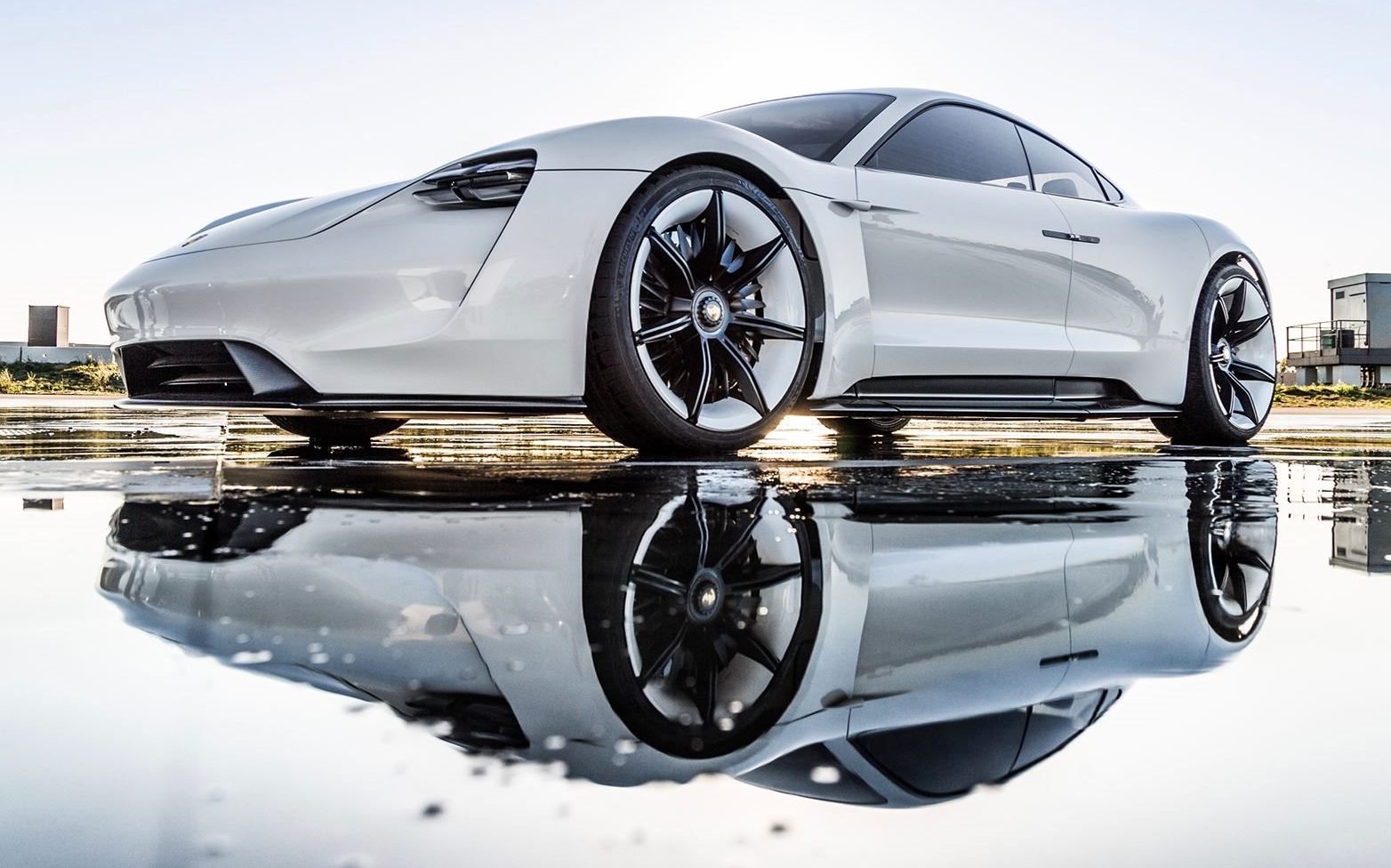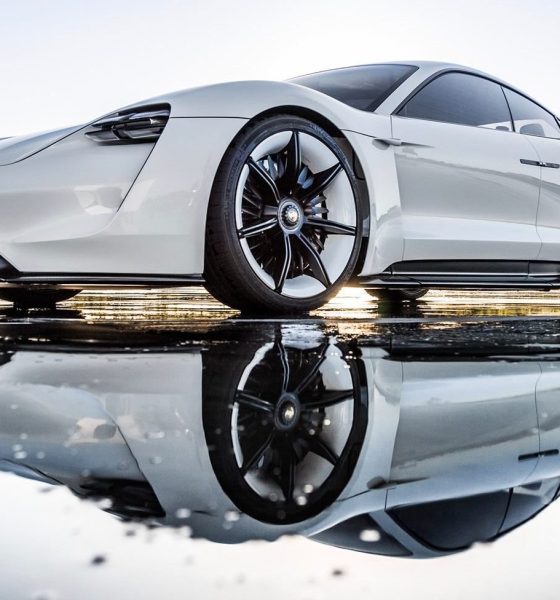

News
Porsche rolls out another Taycan teaser in the form of an instructional video
Porsche is gearing up for the production of its very first all-electric vehicle — the Taycan. Initially dubbed as the Mission E sedan prior to being christened with its official name, the Taycan is expected to start production sometime in 2019.
There is no doubt that the upcoming sedan is attracting a lot of interest from the EV community. That said, the vehicle just has this one tiny issue — its name is proving to be a pain to pronounce. To address this, Porsche has released its latest teaser for the vehicle, which comes in the form of an instructional video on how to pronounce “Taycan” correctly.
While it is easy to point the blame at Porsche for giving its first all-electric car a tricky name, this is not the first time that the legacy carmaker has published a “how to pronounce” video. Back in 2016, the company rolled out a similar ad, demonstrating the correct pronunciation for “Porsche.” In that particular video, Porsche even provided the International Phonetic Alphabet (IPA) transcription of its name (pɔɐ̯ʃə) to ensure that viewers could pronounce its name correctly.
Needless to say, a good number of Porsche fans still pronounce the company’s name as “Porsch” or even “Porch” today.
As for the recent Taycan ad? Porsche notes that the correct pronunciation of the vehicle’s name is “Tie-con,“ and not “Tei-can” or “Tei-ken.“ This notably limits the amount of Liam Neeson references that can be related to the electric car, but it does help ensure that Porsche fans don’t embarrass themselves when speaking to German owners and enthusiasts about the sleek, zero-emissions high-performance EV.
Inasmuch as Porsche’s latest Taycan ad is a bit amusing, it should be noted that the Taycan is actually one of the only vehicles in the company’s lineup with a name that’s a pain to pronounce. Other cars, such as the 911, the Macan, and the Cayenne, after all, are pretty much impossible to mispronounce. That said, Porsche did explain when it announced electric car’s official name that “Taycan” roughly translates to “lively young horse.” As such, the name is a significant nod to the rearing steed in the company’s iconic crest.
Porsche is arguably one of the legacy automakers that appears to be putting a lot of serious effort in the development of its electric car lineup. While fellow German carmakers Mercedes-Benz and Audi have beaten Porsche to the punch with electric car launches this year, the EQC and the e-tron could be described as EV conversions of existing ICE-powered vehicles. Porsche took a different approach with the Taycan, designing the car from the ground up, similar to how Tesla approached the industry-leading Model S.
The results of the Porsche’s efforts are evident in the vehicle’s performance figures and track-capability. Test mules of the car frequent the Nurburgring, where they could be seen stealthily attacking the iconic circuit’s corners. Camouflaged prototypes of the vehicle have also been spotted in regions outside Europe, including the United States. Performance-wise, the Taycan is a true Porsche, with its 0-60 mph time of 3.5 seconds, its top speed of 155 mph, and its range of 310 miles per charge.
Watch Porsche’s instructional ad for the Taycan in the video below.

News
Tesla Insurance officially expands to new U.S. state
Tesla’s in-house Insurance program first launched back in late 2019, offering a new way to insure the vehicles that was potentially less expensive and could alleviate a lot of the issues people had with claims, as the company could assess and repair the damage itself.

Tesla Insurance has officially expanded to a new U.S. state, its thirteenth since its launch in 2019.
Tesla has confirmed that its in-house Insurance program has officially made its way to Florida, just two months after the company filed to update its Private Passenger Auto program in the state. It had tried to offer its insurance program to drivers in the state back in 2022, but its launch did not happen.
Instead, Tesla refiled the paperwork back in mid-October, which essentially was the move toward initiating the offering this month.
BREAKING: Tesla Insurance has just officially launched in Florida.
This is the first new state to receive @Tesla Insurance in more than 3 years. In total, Tesla insurance is now available in 13 U.S. states (map in thread below of all the states).
Tesla Insurance in Florida uses… pic.twitter.com/bDwh1IV6gD
— Sawyer Merritt (@SawyerMerritt) December 17, 2025
Tesla’s in-house Insurance program first launched back in late 2019, offering a new way to insure the vehicles that was potentially less expensive and could alleviate a lot of the issues people had with claims, as the company could assess and repair the damage itself.
It has expanded to new states since 2019, but Florida presents a particularly interesting challenge for Tesla, as the company’s entry into the state is particularly noteworthy given its unique insurance landscape, characterized by high premiums due to frequent natural disasters, dense traffic, and a no-fault system.
Annual average premiums for Florida drivers hover around $4,000 per year, well above the national average. Tesla’s insurance program could disrupt this, especially for EV enthusiasts. The state’s growing EV adoption, fueled by incentives and infrastructure development, aligns perfectly with Tesla’s ecosystem.
Moreover, there are more ways to have cars repaired, and features like comprehensive coverage for battery damage and roadside assistance tailored to EVs address those common painpoints that owners have.
However, there are some challenges that still remain. Florida’s susceptibility to hurricanes raises questions about how Tesla will handle claims during disasters.
Looking ahead, Tesla’s expansion of its insurance program signals the company’s ambition to continue vertically integrating its services, including coverage of its vehicles. Reducing dependency on third-party insurers only makes things simpler for the company’s automotive division, as well as for its customers.
News
Tesla Full Self-Driving gets sparkling review from South Korean politician
“Having already ridden in an unmanned robotaxi, the novelty wasn’t as strong for me, but it drives just as well as most people do. It already feels like a completed technology, which gives me a lot to think about.”

Tesla Full Self-Driving got its first sparkling review from South Korean politician Lee So-young, a member of the country’s National Assembly, earlier this week.
Lee is a member of the Strategy and Finance Committee in South Korea and is a proponent of sustainable technologies and their applications in both residential and commercial settings. For the first time, Lee was able to utilize Tesla’s Full Self-Driving technology as it launched in the country in late November.
Her thoughts on the suite were complimentary to the suite, stating that “it drives just as well as most people do,” and that “it already feels like a completed technology.”
드디어 오늘, 서울에서 테슬라 FSD 체험 했습니다.
JiDal Papa님의 모델S 협찬에 힘입어^^ 파파님 정말 감사합니다.
국회 -> 망원시장 -> 홍익대 -> 국회 복귀 코스였고요.
이미 무인 로보택시를 타봐서 그런지 신기함은
덜했지만, 웬만한 사람만큼 운전을 잘하네요.이미 완성된 기술이라고… pic.twitter.com/8pAidHBpRG
— 이소영 국회의원 (Soyoung Lee) (@im_soyounglee) December 17, 2025
Her translated post says:
“Finally, today I got to experience Tesla FSD in Seoul. Thanks to the Model S sponsored by JiDal Papa^^, I’m truly grateful to Papa. The route was from the National Assembly -> Mangwon Market -> Hongik University -> back to the National Assembly. Having already ridden in an unmanned robotaxi, the novelty wasn’t as strong for me, but it drives just as well as most people do. It already feels like a completed technology, which gives me a lot to think about. Once it actually spreads into widespread use, I feel like our daily lives are going to change a lot. Even I, with my license gathering dust in a drawer, don’t see much reason to learn to drive a manual anymore.”
Tesla Full Self-Driving officially landed in South Korea in late November, with the initial launch being one of Tesla’s most recent, v14.1.4.
It marked the seventh country in which Tesla was able to enable the driver assistance suite, following the United States, Puerto Rico, Canada, China, Mexico, Australia, and New Zealand.
It is important to see politicians and figures in power try new technologies, especially ones that are widely popular in other regions of the world and could potentially revolutionize how people travel globally.
News
Tesla dispels reports of ‘sales suspension’ in California
“This was a “consumer protection” order about the use of the term “Autopilot” in a case where not one single customer came forward to say there’s a problem.
Sales in California will continue uninterrupted.”

Tesla has dispelled reports that it is facing a thirty-day sales suspension in California after the state’s Department of Motor Vehicles (DMV) issued a penalty to the company after a judge ruled it “misled consumers about its driver-assistance technology.”
On Tuesday, Bloomberg reported that the California DMV was planning to adopt the penalty but decided to put it on ice for ninety days, giving Tesla an opportunity to “come into compliance.”
Tesla enters interesting situation with Full Self-Driving in California
Tesla responded to the report on Tuesday evening, after it came out, stating that this was a “consumer protection” order that was brought up over its use of the term “Autopilot.”
The company said “not one single customer came forward to say there’s a problem,” yet a judge and the DMV determined it was, so they want to apply the penalty if Tesla doesn’t oblige.
However, Tesla said that its sales operations in California “will continue uninterrupted.”
It confirmed this in an X post on Tuesday night:
This was a “consumer protection” order about the use of the term “Autopilot” in a case where not one single customer came forward to say there’s a problem.
Sales in California will continue uninterrupted.
— Tesla North America (@tesla_na) December 17, 2025
The report and the decision by the DMV and Judge involved sparked outrage from the Tesla community, who stated that it should do its best to get out of California.
One X post said California “didn’t deserve” what Tesla had done for it in terms of employment, engineering, and innovation.
Tesla has used Autopilot and Full Self-Driving for years, but it did add the term “(Supervised)” to the end of the FSD suite earlier this year, potentially aiming to protect itself from instances like this one.
This is the first primary dispute over the terminology of Full Self-Driving, but it has undergone some scrutiny at the federal level, as some government officials have claimed the suite has “deceptive” naming. Previous Transportation Secretary Pete Buttigieg was vocally critical of the use of the name “Full Self-Driving,” as well as “Autopilot.”








